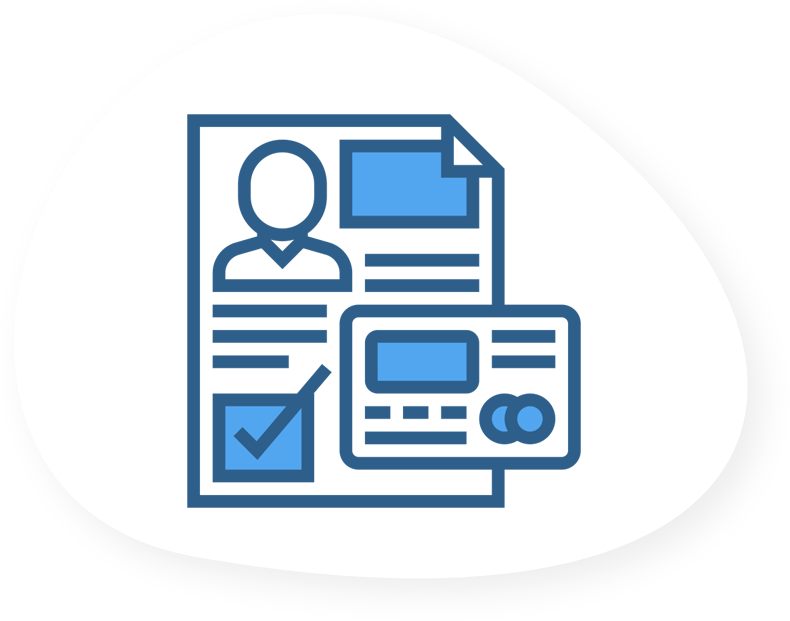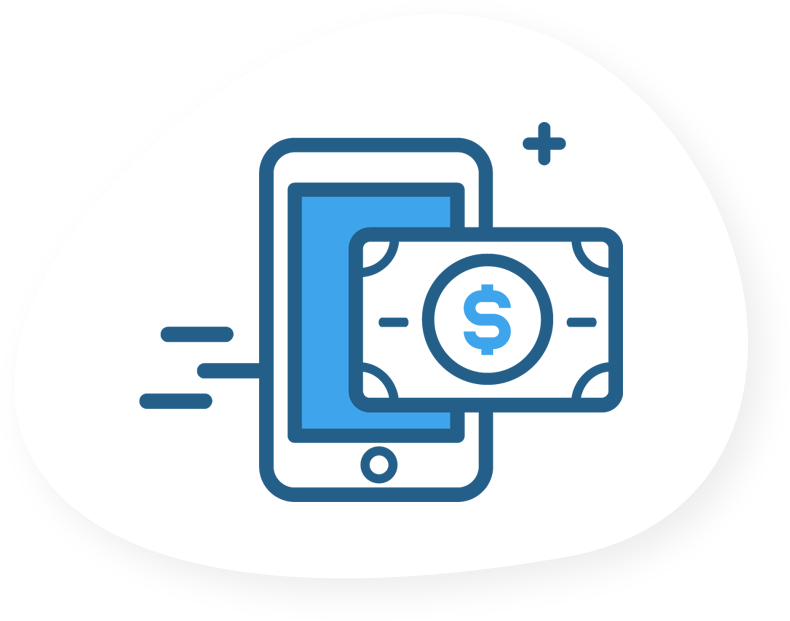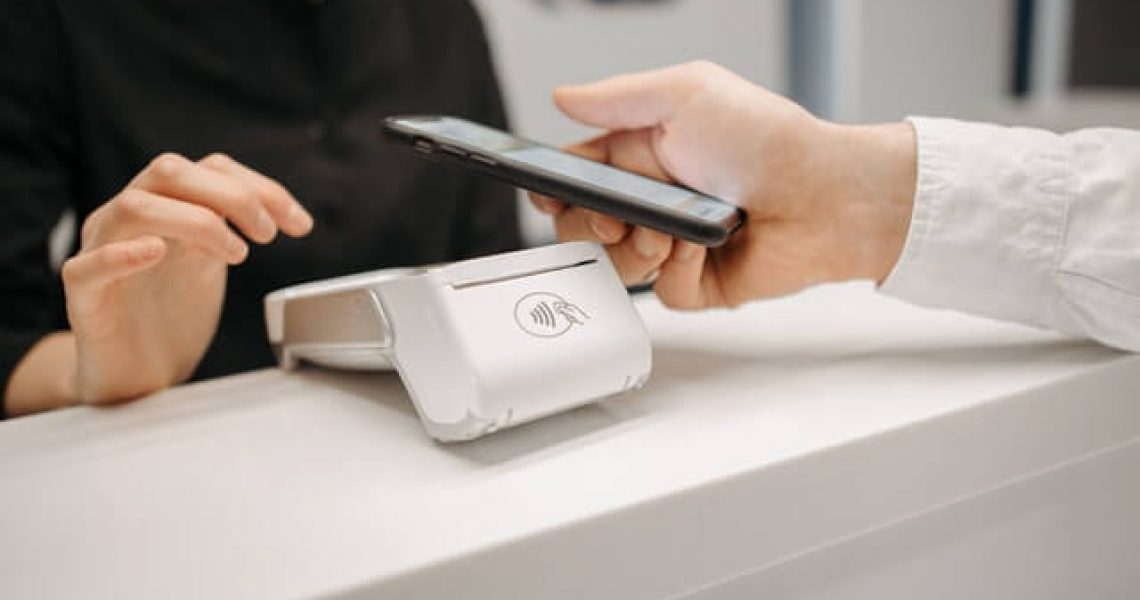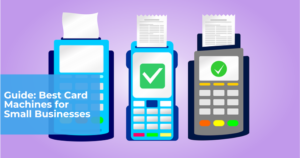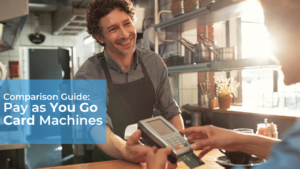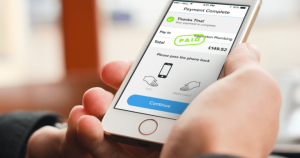No matter which industry your small business operates within, you’ll likely have noticed the growth in popularity of cashless payments. But, if you’re thinking of migrating to a cash-free system yourself, it can be difficult to know where to start. Fortunately, we’ve created the ultimate cashless payments guide, to answer your queries and concerns.
In this article:
Cashless payments: a brief history
While gaining particular popularity in recent years, cashless payments aren’t necessarily a new phenomenon. Early methods include:
- Cheques
A cheque is a document that instructs an individual’s bank to transfer a specific amount of money from their account to another specified bank account. Within three days of being deposited, the designated amount will be moved via a process known as the ‘Paper Clearing System’. Astonishingly, despite there now being numerous more efficient and instant payment methods, cheques are still commonly used in both the UK and US.
- Money orders
Similar to a cheque, a money order is a document instructing payment. However, it differs in that it is paid for ahead of being given to the recipient (using cash or another guaranteed payment i.e. not credit card), so payment is certain with no chance of bouncing. Money orders are typically used by people sending payment via post, those who don’t want to carry around large sums of cash, and individuals who don’t necessarily have convenient access to banks.
- Electronic funds transfers
An electronic funds transfer (EFT) is a straightforward way to move money from one online account to another. Examples of EFT payments include payment over the phone, wire transfers, and electronic cheques.
Modern financial trends
Advancements in payment technology have led to the rise of digital transactions, which offer increased speed and efficiency. Examples include:
Debit and credit card payments
Debit and credit cards have quickly become one of the most popular forms of payment in the UK. But what are the differences between credit and debit?
- Debit cards
When you use a debit card, you’re drawing funds from your own bank account. This means that the amount of money you can spend is tied to the amount of money currently held within your chosen account.
Debit cards are widely accepted, allow you to withdraw cash, and are a good way to ensure you don’t spend beyond your means. However, they don’t help you improve your credit score and have limited protection when it comes to fraud.
- Credit cards
When you use a credit card, you’re borrowing money from the card issuer (up to your credit limit). This money is then paid back by an agreed date, with charges applied if late.
Using a credit card responsibly is often a good way to improve your credit score and finance larger payments, as well as offering greater fraud protection than debit payments. However, it’s important to be careful; overspending and late payment penalties can negatively impact your credit profile.
The role of the internet in cashless payments
The internet has become an accessible resource for almost everyone, and had a direct impact on the rise of cashless payments. With a shift towards practical and easily-navigable ecommerce, it’s been essential for businesses to adapt and offer digital payment options for customers. In fact, with just 1-in-6 payments reported to be conducted with cash, failing to adapt can even cost businesses customers.
The emergence of payment processors
Credit and debit card payments make completing transactions more straightforward than handling cash, but they can come with logistical hurdles. This is where a payment processor comes in, with software managing the transaction and mediating the sale.
The emergence of payments apps
Cash-free payment methods are continuing to evolve, with the most recent introduction being payment apps. With just the touch of a button, you’re now able to pay (and get paid) for goods and services from your smart device, via your digital wallet or a connected card, negating the need to carry cash entirely.
Cashless and contactless payments
You might have heard the terms cashless and contactless used, but what are the differences and how can you tell them apart?
What are cashless payments?
As the name suggests, a cashless payment is any transaction completed via any means other than cash. Methods include:
- Credit and debit cards
- Digital wallets (i.e. Apple Wallet, Google Pay, Samsung Pay)
- Bank transfer (ACH/DD)
- Electronic payment apps (i.e. PayPal)
What is a contactless payment?
Contactless is a form of cashless payment, but doesn’t require any physical contact between a consumer’s credit/debit card/digital wallet and your POS system to complete the transaction. Instead, near field communication (NFC) technology communicates the payment with your card reader hardware or compatible smart device through radio frequency.
What you need for a cashless business system
Countless businesses benefit from moving to a cashless payment model, but it’s important to have the right software, hardware, and tools in place to ensure a smooth transition. We’ve outlined the five key components you’ll need before you can roll out your cash-free payment model.
1. Payment terminal
A payment terminal is a piece of hardware that lets you complete cashless transactions, such as credit and debit card payments via PIN or swipe. You don’t necessarily need specialist equipment, and you can even turn your mobile device into a payment terminal by downloading the SimplyPayMe software. Payment terminals are often referred to as POS systems.
2. Contactless card reader
A contactless card reader allows you to accept credit and debit card payments without a customer having to enter their PIN. Often, your payment terminal hardware will offer contactless capability, but you can also use the SimplyPayMe payment app to quickly scan a customer’s card without them having to enter their PIN.
3. Virtual terminal
Unlike a traditional payment terminal, a virtual terminal is a secure web- or mobile-based processing system that allows you to complete transactions without the cardholder having to be present. This offers both practicality and convenience for both vendor and customer. For instance, MOTO payments are made through a virtual terminal, with your business taking a customer’s details over the phone or through an order form.
Invoicing software automatically generates bills for your customers and clients, so you don’t have to manually request payment. This is especially helpful if you allow a grace period for payment and have several due at once. Often, invoicing software will also allow you to create quotes, request deposits for planned work, and track all payments, and is available via the SimplyPayMe mobile app.
5. Online store
A digital presence is absolutely essential for any business looking to maximise potential revenue, with an online store central. As well as providing a direct source of revenue from existing customers, having an online store that consumers can visit and explore makes it easier to market your company across social media, which can contribute to further sales.
What are the benefits and drawbacks of going cashless?
Many companies are already either entirely cashless or offer alternative payment solutions for customers, in part as a response to not wanting to handle physical money throughout the pandemic. Discover how going cashless can benefit your business, and what you should be aware of before adopting a new digital system.
The benefits of going cashless
Accepting cashless payments potentially widens your customer base (and, more importantly, you run the risk of losing customers if you don’t), but there are also a whole host of other benefits you could be capitalising on. For instance:
- Improve security – conducting all transactions through digital payments improves business security, and reduces the chance of petty theft, both internally and externally.
- Enhance the customer experience – cashless payments make the transactional experience much more convenient. Rather than shoppers having to withdraw cash to shop your products or services, they can simply tap and go, enter their credit/debit card PIN, or pay online.
- Improve business efficiency – paying digitally or with a credit/debit card is typically much faster than cash. As a result, speedier transactions help to improve efficiency, freeing up your time and resources to focus on essential areas of the business.
- Monitor cash flow – accepting digital and cashless payments makes it easier to monitor incomings and outgoings. Rather than having to manually go through your register at the end of the business day to record takings, each transaction is recorded immediately – and you’ll never find yourself short!
- Address customer demand – in a world where cashless payment is encouraged for an array of reasons (including health and safety in relation to the pandemic), customers are increasingly leaving the house and shopping without cash. With this in mind, only accepting cash could potentially alienate a large section of your target market.
The drawbacks of going cashless?
Of course, while there are many benefits to going cashless, it’s important to be aware of the potential drawbacks that some businesses face:
- Processing fees – something you should be aware of before implementing a cashless strategy is the merchant fees associated with credit and debit card payments. This is essentially a transaction charge that is applied each time someone pays using plastic, and is typically 1-3% of the sale.
- Excludes cash-only customers – while it’s true that going cashless will likely make your service more accessible to a new wave of potential customers who don’t carry physical money, you risk excluding those who still rely on cash. Fortunately, the SimplyPayMe mobile app allows you to register cash payments and send digital receipts.
- Potential privacy concerns – because cashless payments are typically digital or conducted online, there’s the chance that transactions could become exposed to hackers. Fortunately, all payments processed through the SimplyPayMe virtual terminal are encrypted.
How to choose the best cashless payment system
When choosing between cashless payment systems, there are certain factors that you should prioritise. These include:
- The ability to provide quotes, deliver invoices, and track outstanding payments.
- The ability to record and monitor sales in real time.
- The ability to take multiple types of customer payments, including debit/credit card.
- Having a central digital dashboard for making immediate transfers.
- Offering straightforward transfer of funds between connected accounts.
- Having a user-friendly and intuitive interface.
- No hidden costs.
How to migrate to a cashless business
When migrating to a cash-free system, there are three crucial steps to bear in mind, to ensure the move is effective and efficient:
1. Adopt the right tools – the decision to stop accepting cash payments might be merited, but you need to ensure your new processes are flawless. This means making sure all customer details are encrypted, you have access to all transaction and business data, and customer service is a priority.
2. Employee training – once you’ve implemented your new system, it’s important to train your staff to use it correctly. Having staff who can effectively and efficiently operate the new hardware, software, and virtual terminal will greatly reduce the time it takes to process a payment.
3. Consider transitioning – if it’s not feasible to offer all forms of cash-free payments (i.e. contactless) immediately, think about the types you can accept instead and consider transitioning to a more diverse cashless system over a period of time.
Things to consider before going cashless
With the UK increasingly steering towards becoming primarily cashless, following suit helps your business to keep up with the times and remain efficient. We’ve outlined the main things you should consider when moving to a cash-free system.
How does your business operate?
There are numerous benefits to going cashless, especially for businesses that generally accept lots of small, quick sales – such as coffee shops. Speedier contactless transactions can reduce the time between payments and greatly improve efficiency.
Where are you operating?
Cashless and contactless payments are commonplace in the UK, and many companies no longer accept cash as standard. But it’s a slightly different story in the US, where it’s illegal in some states or cities to refuse cash payments. If you offer services in the US, it’s essential that you clarify your region’s stance on going cash-free.
What does the market demand?
Before going cashless, consider customer preferences – after all, they’re the people who are engaging with your business. If you recognise that cash is still popular among your consumers, consider ways you can incentivise debit/credit card payments instead.
To summarise
Cashless payments are becoming increasingly common and small businesses up and down the country are recognising the benefits of migrating to a digital system. However, there are factors you’ll need to consider before can make the transition:
- Do you have the required hardware to accept debit/credit card and contactless payments?
- Have you compared available software providers to find a system that offers complete control over sales, cash flow, and invoicing?
- Do you have the processes in place to migrate efficiently and effectively, with minimal disruption to staff, customers, and the business?
Now you have a comprehensive understanding of what cash-free payments are, see how your business can benefit from adopting the system. Or for even more helpful insight and advice, check out the latest from our experts over on our blog.

